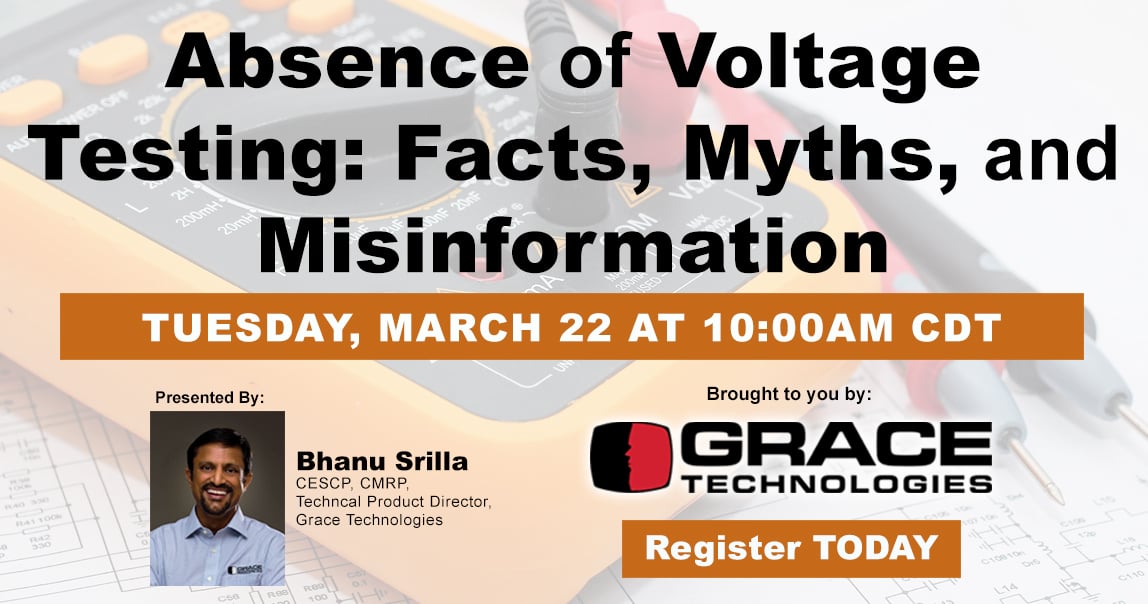To prep for next week's webinar, let's talk about why a metal casting facility chose the Voltage Test Station (VTS) to solve their absence of voltage testing challenge. But first, registration is still open for the "Facts, Myths, and Misinformation" webinar presented by Grace Technologies Technical Product Director, Bhanu Srilla, CESCP, CMRP. Be sure to register today!
Over the years, Permanent Electrical Safety Device (PESD) users have reported an increase in safety and productivity when using them to verify voltage presence with voltage indicators or test for absence of voltage using their portable multimeter with our Safe-Test Point™ and Voltage Test Station. Simply put, PESDs provide a safer and more productive means of performing Mechanical or Electrical Lockout/Tagout (LOTO) procedures. The VTS combines a voltage presence LED indicator with a high-impedance protected Safe-Test Point™ for absence of voltage testing.
For Torrance Casting, safety is about more than just compliance. The metal casting facility located in La Crosse, WI has a marvelous history of 145-plus years of a family-owned business that is now transitioning into the sixth generation. They describe their commitment and concern for the community, being a good neighbor, a good employer within their geography, and servicing their customers beyond expectations.
Part of the culture they have established as a family-owned business has led Torrance Casting to implement initiatives in terms of electrical safety that go beyond compliance to achieve maximum safety. The guidelines within NFPA 70E standard point to what companies are required to do, and Torrance Casting understands that because they can improve worker safety, create a more reliable and safer electrical program, they can in turn protect their employees and become more efficient at the same time.

Unique to the metal casting facility’s environment is a furnace that is one of its most critical assets. The furnace is directly connected to a medium voltage transformer and is unique because it goes from that medium-voltage transformer directly to a motor control cabinet operating at 575V in the process. Upon analyzing the safety concerns for their workers operating within this cabinet, they enlisted the help of a reputable electrical contractor and their expertise to devise a safer solution.
In association with ASG Electric, the company conducted an arc flash calculation. Given how close it is to medium voltage and the type of fusing, the calculated incident energy was 119 calories. The cabinet configuration proved to be quite a challenge from there. The question from the facility manager at that time was, “How do I open the door and do an inspection when it's 119 calories?”
ASG Electric surmised that the best-case scenario is that they shouldn’t have people in that cabinet at all unless they can absolutely be assured that they are within an electrically safe work condition, as defined by NFPA 70E standards. This led ASG and Torrance to investigate other absence of voltage testing solutions.

As ASG Electric did their data collections, their TEGG Services protocol gave them all the pictures, images, and details they needed. After attending one of our electrical safety webinars on the topic of absence of voltage testing, ASG’s owner and operator, Chuck Fox, reached out to the presenter, Bhanu Srilla, Director of Technical Marketing at Grace Technologies, to help develop a permanent electrical safety solution.
ASG Electric quickly determined that the VTS proved to be a viable solution for this application. Having this hazardous piece of equipment identified and having learned of Grace’s Absence of Voltage Testing solutions, Torrance was able to move forward and enhance their safety program with GracePESDs. Bhanu spoke with Chuck Fox of ASG Electric about how they found the VTS to be the perfect solution for their application:
The VTS makes electrical safety simple by allowing users to perform LOTO and absence of voltage testing the same way you do today, only without having to open the cabinet door and create exposure to high incident energy. The verification of voltage presence is illuminated by LED lights with the built-in voltage indicator, while the Safe-Test Point™ provides the ability to test for absence of voltage with their trusted metered devices.
To get some background on our upcoming webinar, dive into Misconceptions on Absence of Voltage Testing article written by Bhanu Srilla as he confronts the most common misconceptions surrounding the use of PESDs for Absence of Voltage. Download this article here.

Date: March 28-31
Location: Atlanta, GA
Booth Number: #C4598
Why Attend? As the speed of manufacturing, supply chain, and transportation operations continues to accelerate, the future of our industry depends on today’s forward-thinking decisions. From illuminating education to next-generation technology and equipment in action, MODEX lets you see what’s coming — and take advantage of it to power your supply chain with more possibilities for years to come. MODEX 2022 will allow you to make new contacts, discover cutting-edge solutions, and learn the latest trends that are sure to give you a leg up on the competition.
As I mentioned at the top, registration is still open for our next FREE webinar. Absence of Voltage Testing is one of the critical steps in the process of establishing and verifying an electrically safe work condition, Article 120.5, NFPA 70E. This session will dive into the risks associated with these tasks and compare various methods and technologies to minimize the hazard exposure and risks to acceptable levels.





